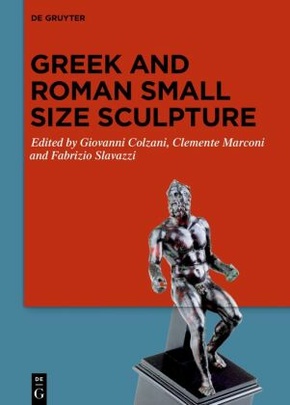Greek and Roman Small Size Sculpture
| Verlag | De Gruyter |
| Auflage | 2023 |
| Seiten | 294 |
| Format | 17,6 x 3,2 x 24,6 cm |
| Gewicht | 857 g |
| Artikeltyp | Englisches Buch |
| ISBN-10 | 3110740796 |
| EAN | 9783110740790 |
| Bestell-Nr | 11074079A |
Considerations about size and scale have always played a central role within Greek and Roman visual culture, deeply affecting sculptural production. Both Greeks and Romans, in particular, had a clear notion of "colossality" and were able to fully exploit its implications with sculpture in many different areas of social, cultural and religious life. Instead, despite their ubiquitous presence, an equal and contrary categorization for small size statues does not seem to have existed in Greek and Roman culture, leading one to wonder what were the ancient ways of conceptualizing sculptural representations in a format markedly smaller than "life-size." Even in the context of modern scholarship on Classical Art, few notions appear to be as elusive as that of "small sculpture", often treated with a certain degree of diffidence well summarized in the formula Klein, aber Kunst? In fact, a large and heterogeneous variety of objects corresponds to this definition: all kinds of small sculpture , from statuettes to miniatures, in a variety of materials including stone, bronze, and terracotta, associated with a great array of functions and contexts, and with extremely different levels of manufacture and patronage. It would be a major misunderstanding to think of these small sculptures in general as nothing more than a cheap and simplified alternative to larger scale statues. Compared with those, their peculiar format allowed for a wider range of choices, in terms, for example, of use of either cheap or extremely valuable materials (not only marble and bronze, but also gold and silver, ivory, hard stones, among others), methods of production (combining seriality and variation), modes of fruition (such as involving a degree of intimacy with the beholder, rather than staging an illusion of "presence"). Furthermore, their pervasive presence in both private and public spaces at many levels of Greek and Roman society presents us with a privileged point of view on the visual lit eracy of a large and varied public. Although very different in many respects, small-sized sculptures entertained often a rather ambivalent relationship with their larger counterparts, drawing from them at the same time schemes, forms and iconographies. By offering a fresh, new analysis of archaeological evidence and literary sources, through a variety of disciplinary approaches, this volume helps to illuminate this rather complex dynamic and aims to contribute to a better understanding of the status of Greek and Roman small size sculpture within the general development of ancient art.

